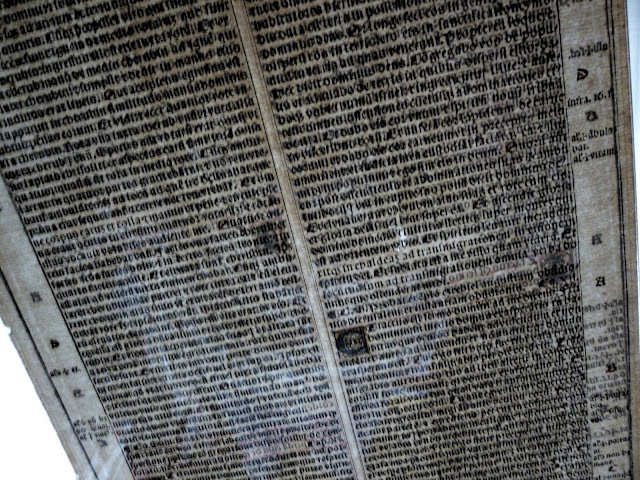Red lacquer
ְּרוּבִים כ k ə rūvîm) is one of the unearthly beings who directly attend to
God, according to Abrahamic religions. The numerous depictions of
cherubim assign to them many different roles, such as protecting the
entrance of the Garden of Eden. [2]
In Jewish angelic hierarchy, cherubim have the ninth (second-lowest)
rank in Maimonides' Mishneh Torah (12th century), and the third rank
in Kabbalistic works such as Berit Menuchah (14th century). De
Coelesti Hierarchia places them in the highest rank alongside
Seraphim and Thrones. [3]
In the Book of Ezekiel and (at least some) Christian icons, the cherub
is depicted as having two pairs of wings, and four faces: that of a lion
(representative of all wild animals), an ox (domestic animals), a
human (humanity), and an eagle (birds). [4][5] Their legs were straight,
the soles of their feet like the hooves of a bull, gleaming like polished
brass. Later tradition ascribes to them a variety of physical
appearances. [4] Some early midrashic literature conceives of them as
non-corporeal. In Western Christian tradition, cherubim have become
associated with the putto (derived from classical Cupid/Eros),
resulting in depictions of cherubim as small, plump, winged boys. [6]
A tetramorph cherub, in Eastern
Orthodox iconography
In Islam, the cherubim are the angels closest to God. Joseph von
Hammer-Purgstall noted Rūḥ as one of the most noble among the
cherubim. Others are the Bearers of the Throne or the archangels. [7]
In Ismailism, there are seven cherubim, comparable to the Seven
Archangels. [8] wiki
In Judaism, Christianity, and Islam, Ezekiel is acknowledged as a Hebrew prophet. In Judaism and Christianity, he is also viewed as the 6th-century BCE author of the Book of Ezekiel, which reveals prophecies regarding the destruction of Jerusalem, and the restoration to the land of Israel.
Ezekiel statue on the stJohns-sint Janskathedraal 's-Hertogenbosch
Ezekiel, like Jeremiah, is said by Talmud[12] and Midrash[13] to have been a descendant of Joshua by his marriage with the proselyte and former prostitute Rahab. Some statements found in rabbinic literature posit that Ezekiel was the son of Jeremiah, who was (also) called "Buzi" because he was despised by the Jews.[14]
Ezekiel was said to be already active as a prophet while in the Land of Israel, and he retained this gift when he was exiled with Jehoiachin and the nobles of the country to Babylon.[15]
Rava states in the Babylonian Talmud that although Ezekiel describes the appearance of the throne of God (Merkabah), this is not because he had seen more than the prophet Isaiah, but rather because the latter was more accustomed to such visions; for the relation of the two prophets is that of a courtier to a peasant, the latter of whom would always describe a royal court more floridly than the former, to whom such things would be familiar.[16] Ezekiel, like all the other prophets, has beheld only a blurred reflection of the divine majesty, just as a poor mirror reflects objects only imperfectly.[17]
According to the midrash Canticles Rabbah, it was Ezekiel whom the three pious men, Hananiah, Mishael, and Azariah (also called Shadrach, Meshach, and Abednego in the Bible) asked for advice as to whether they should resist Nebuchadnezzar's command and choose death by fire rather than worship his idol. At first God revealed to the prophet that they could not hope for a miraculous rescue; whereupon the prophet was greatly grieved, since these three men constituted the "remnant of Judah". But after they had left the house of the prophet, fully determined to sacrifice their lives to God, Ezekiel received this revelation: "Thou dost believe indeed that I will abandon them. That shall not happen; but do thou let them carry out their intention according to their pious dictates, and tell them nothing".[18] wiki
Ezekiel is recognized as a prophet in Islamic tradition. Although not mentioned in the Qur'an by the name, Muslim scholars, both classical[b] and modern[c] have included Ezekiel in lists of the prophets of Islam.
The Qur'an mentions a prophet called Zul-Kifl. This prophet is sometimes identified with Ezekiel although Zul-Kifl's identity is disputed. Carsten Niebuhr, in his Reisebeschreibung nach Arabian,[23] says he visited Al Kifl in Iraq, midway between Najaf and Hilla and said Kifl was the Arabic form of Ezekiel. He further explained in his book that Ezekiel's Tomb was present in Al Kifl and that the Jews came to it on pilgrimage. The name Zul-Kifl or more correctly Dhū l-Kifl (ذو الكفل) would mean "Possessor of the Double" or "Possesor of the Fold" (ذو dhū "possessor of, owner of" and الكفل al-kifl "double, folded"). Some Islamic scholars have likened Ezekiel's mission to the description of Dhul-Kifl. When the exile, monarchy, and state were annihilated, a political and national life was no longer possible. In the absence of a worldly foundation it became necessary to build a spiritual one and Ezekiel performed this mission by observing the signs of the time and deducing his doctrines from them. In conformity with the two parts of his book, his personality and his preaching are alike twofold. Aside from the possible identification of Zul-Kifl with Ezekiel, Muslims have viewed Ezekiel as a prophet, regardless of his identification with Zul-Kifl.
Ezekiel appears in all Muslim collections of Stories of the Prophets.[24] Muslim exegesis further lists Ezekiel's father as Buzi (Budhi) and Ezekiel is given the title ibn al-‘ajūz, denoting "son of the old (man)", as his parents are supposed to have been very old when he was born. A tradition, which resembles that of Hannah and Samuel in the Hebrew Bible, states that Ezekiel's mother prayed to God in old age for the birth of an offspring and was given Ezekiel as a gift from God.[25] wiki















.JPG)

No comments:
Post a Comment